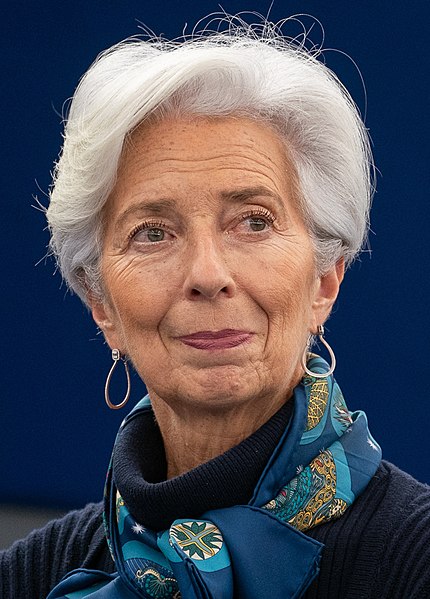
By Belgian MEP Johan Van Overtveldt (Belgian Finance Minister between 2014 and 2018, Chairman of the European Parliament’s Budget Committee and Professor of Economics at the University of Hasselt)
By devoting all of their attention to climate change, the leading central banks of the world are playing a dangerous game. Insufficient attention to increasing inflation could badly backfire.
With inflation at an all-time high of 6.2 per cent in the United States and over 4 per cent in the eurozone, and amid expectations of a further increase in prices, the argument of the central bankers that this would be a temporary increase is sounding increasingly implausible.
Every entrepreneur witnesses substantial price increases in supply chains. This applies to energy costs, but also to many other raw materials and semi-finished products. Many entrepreneurs are also expecting a sharp increase in labour costs, especially in Belgium, with its automatic wage indexation. This translates into rising prices of goods and services, something which in turn fuels salary demands by trade unions. Combined with the fact that big tech is taking advantage of these circumstances to use its market power, something which causes even more price increases, and we’ll get a structural inflationary dynamic. The genie is out of the bottle.
M3 money supply-Massive increase since Biden took office
Per Nobel Prize winning economist Milton Friedman , "Inflation is always & everywhere a monetary phenomenon in the sense that it is and can be produced only by a more rapid increase in the quantity of money than in output” pic.twitter.com/7k1hp9dlcV— theseed (@theseed59788459) July 28, 2021
Monetary factors are all too easily overlooked in the analysis of the increase in inflation. Two elements take centre stage: the velocity of circulation of money in the economy and the money multiplier.
Until recently, both the velocity – the extent to which the available money circulates through the economic circuit in a year – and the money multiplier – the extent to which base money created by central banks is converted into additional money by private banks – have been on a downward trend.
This evolution helps to explain why the very accommodating monetary policy that has been pursued for many years now has not previously resulted in inflation. However, both the velocity of circulation and the money multiplier have recently increased in the US and in the euro area. No wonder inflation is on the rise.
In Oct ’21, € money stock M3 rose 7.7% y/y after 7.5% y/y in Sep. The m/m annualized M3 increase was 9.9%, up from 7.1% earlier; the 3m/3m increase was 7.1%, up from 6.8% previously. The massive “M3 overhang” keeps growing, goods price inflation will go up further … . pic.twitter.com/xSjDD5UdBn
— Thorsten Polleit (@ThorstenPolleit) November 28, 2021
Some Central Banks understand what’s going on
Earlier this year, some central bankers did see the storm brewing. The South Koreans were the first to change tack and embark on a more restrictive monetary course, in August.
Shortly afterwards, the central banks of Norway, the Czech Republic, New Zealand, Romania, Hungary and Poland followed suit. In early November, the Central Banks of Poland and the Czech Republic took fairly drastic action. The inflation rate in Poland is 6.8%, while in the Czech Republic, it is 5%. The markets were clearly taken by surprise by the intensity of the actions in Warsaw and Prague.
The Bank of England shocks analysts with its first rate hike of the pandemic era, delivering an increase no other G-7 central bank has made since the start of the crisis
Latest analysis: https://t.co/C9e423Auym pic.twitter.com/vwemLr2ZUx
— Bloomberg UK (@BloombergUK) December 16, 2021
Meanwhile, the US Federal Reserve has also moved into action, albeit with the handbrake on. The ultra-low base rates remain unchanged in the US, despite inflation reaching its highest level in 30 years. Then the Fed decided to curb its QE policy. However, this is more of a symbolic act than a strong signal that it wants to keep inflation under control.
The ECB is unable to do what’s needed given the impact on public finances
Even with that limited intervention, the Fed is at least one stage ahead of the European Central Bank (ECB). At the end of October, ECB President Christine Lagarde admitted that “the current phase of higher inflation will last longer than originally expected”.
Nevertheless, the ECB remains on course with ultra-low and even negative policy rates, combined with massive QE purchasing. It is painful to witness Lagarde’s helpless discouse on inflation.
#ECB leaves rates unch. Net buying under PEPP will end in March. ECB to extend PEPP reinvestments to at least end of 2024. ECB to boost APP pace to €40bn in Q22022 form €30bn in Q1. APP Purchases will revert to €20bn from Oct2022, continue for as long as necessary (open-ended) pic.twitter.com/tKxpY7RMKw
— Holger Zschaepitz (@Schuldensuehner) December 16, 2021
REALLY? #ECB's Lagarde: Very unlikely ECB will raise rates in 2022. pic.twitter.com/Dq9XsXaya2
— Holger Zschaepitz (@Schuldensuehner) December 16, 2021
It is obvious that the ECB is unable to do what it needs to do, because of the impact less expansionary monetary policies would have on the dire state of public finances in most eurozone countries. No one is saying a word about this.
What to do
Limited interest rate hikes, combined with a well-communicated abandoning of the ECB’s QE policies could offer the prospect of a double whammy: keeping the inflationary upswing in check without damaging the economic recovery. It is a delicate balancing act, but it can be done.
OOPS! #ECB raises 2022 #inflation forecast to 3.2% from 1.7%. Raises 2023 Inflation to 1.8% from 1.5%. Sees inflation rate at 1.8% in 2024. pic.twitter.com/cXXgKoxKgv
— Holger Zschaepitz (@Schuldensuehner) December 16, 2021
To not intervene or to insufficiently intervene increases the risk that drastic action will need to be taken at a later date to prevent inflation from reaching levels that undermine socio-economic well-being.
Today’s central bankers won’t be able to rely on the credibility built up by their predecessors continuously. The day when those in charge at the world’s leading central banks will face a credibility test is approaching fast. They will need to show to translate their eloquent inflation rhetorics into concrete policy action. In Europe, this isn’t part of mainstream thinking yet, but Poland and the Czech Republic are showing the way.
Originally published in Dutch by De Tijd, republished with permission.
Disclaimer: www.BrusselsReport.eu will under no circumstance be held legally responsible or liable for the content of any article appearing on the website, as only the author of an article is legally responsible for that, also in accordance with the terms of use.












